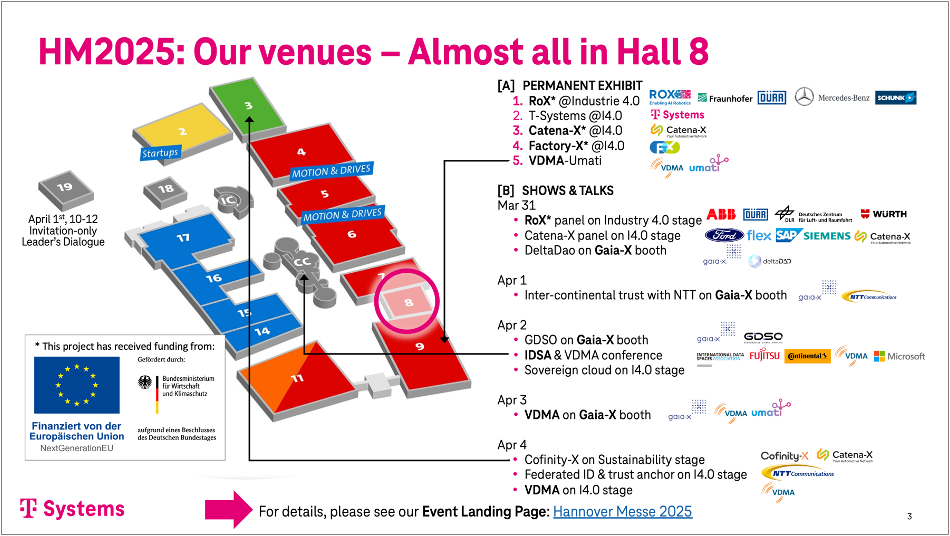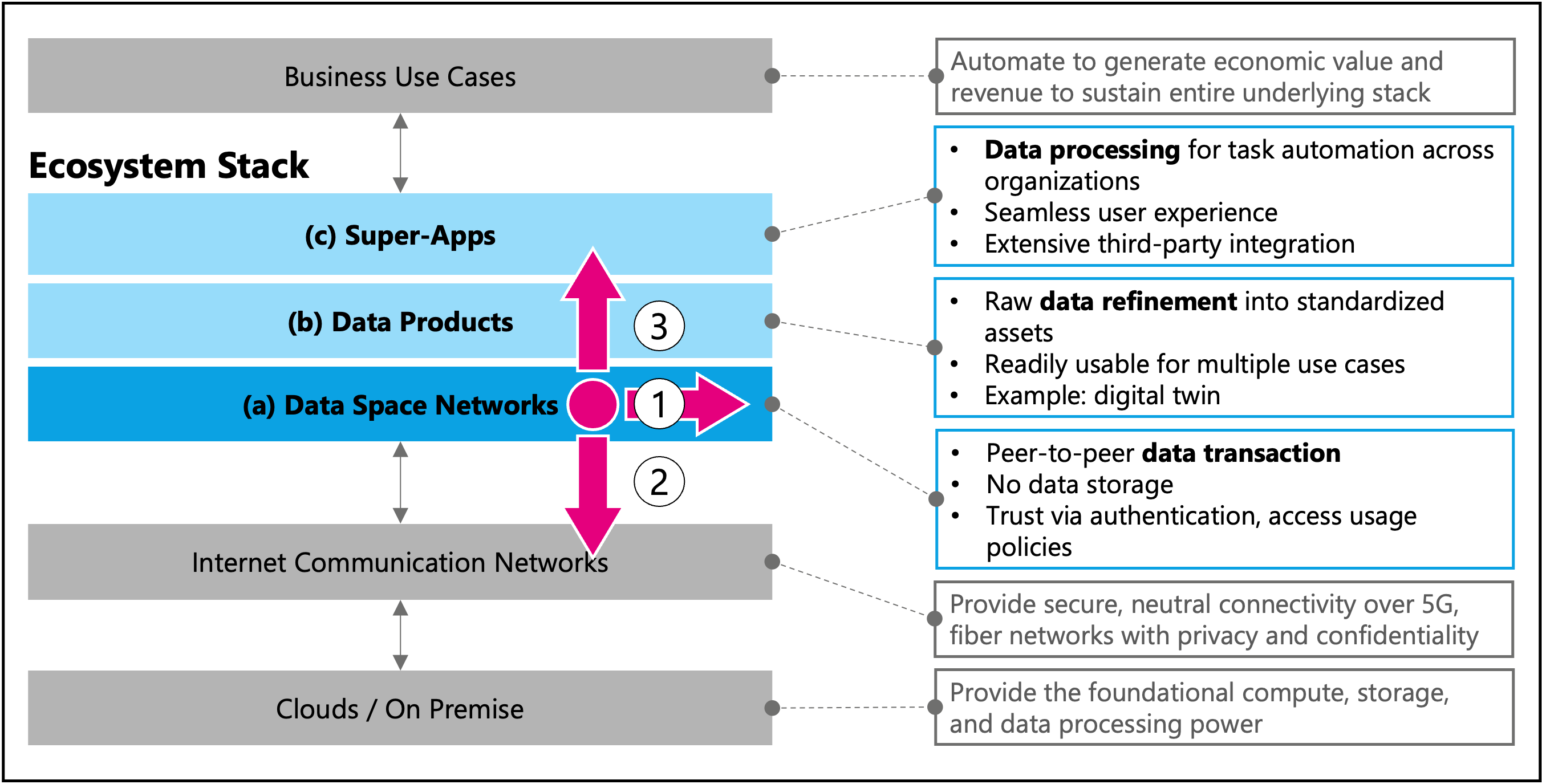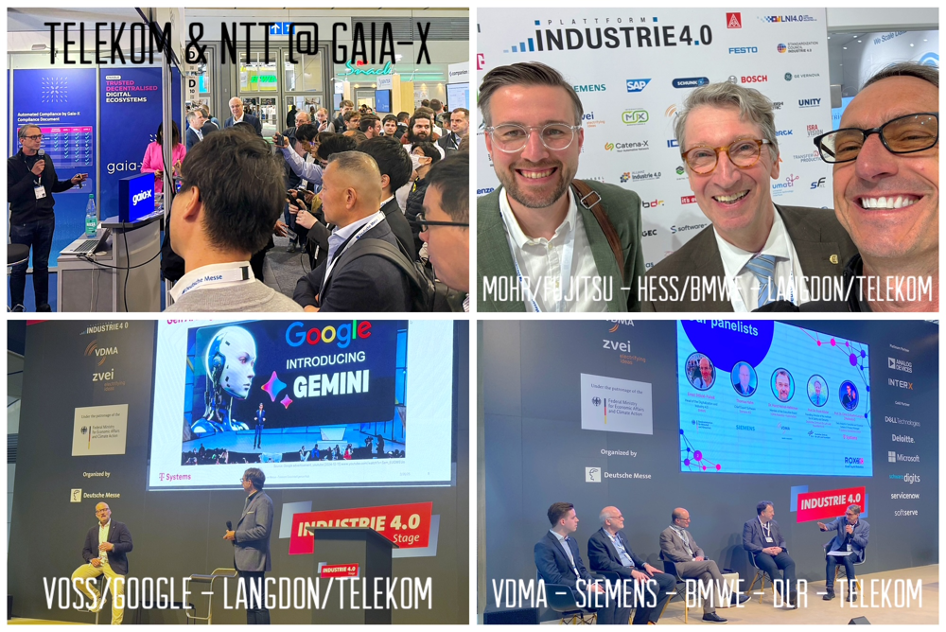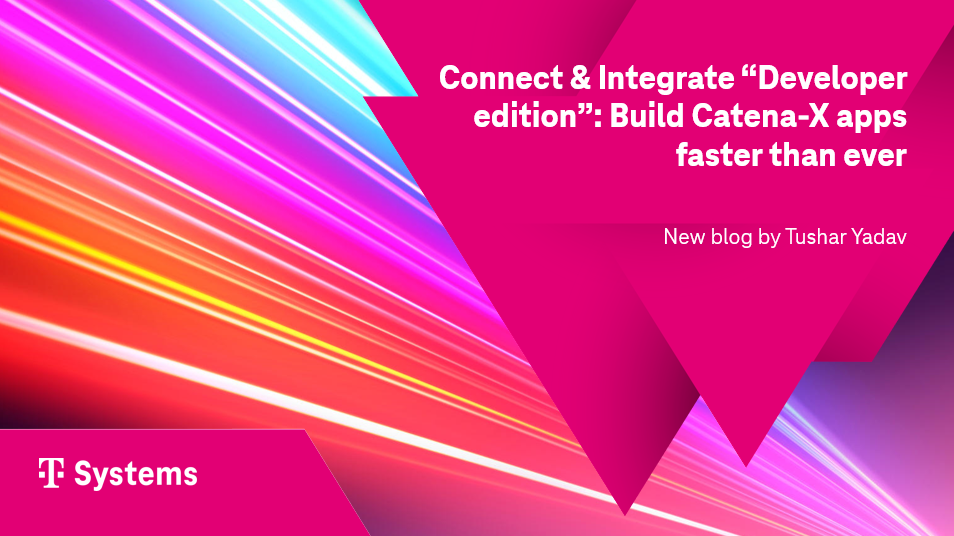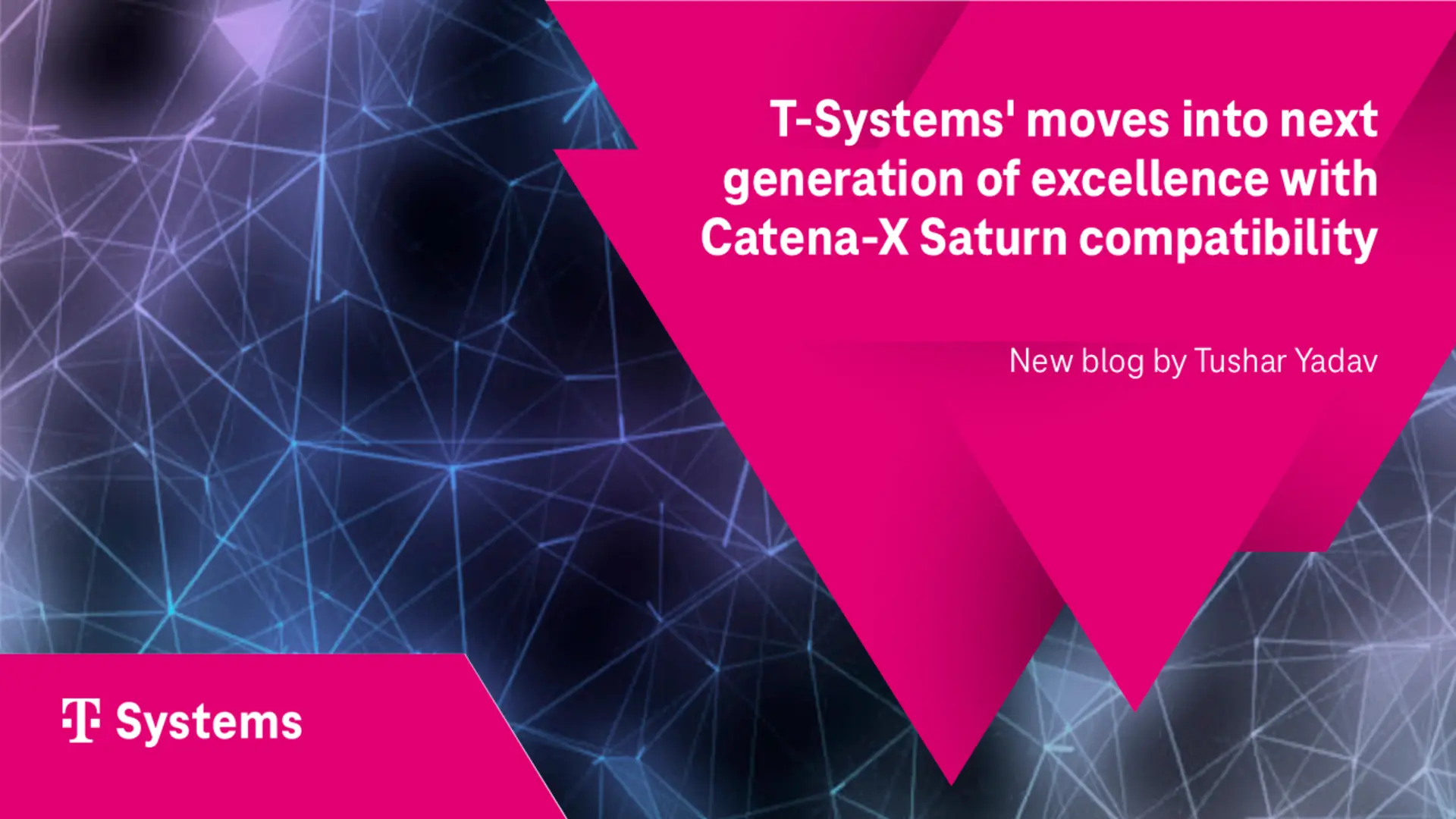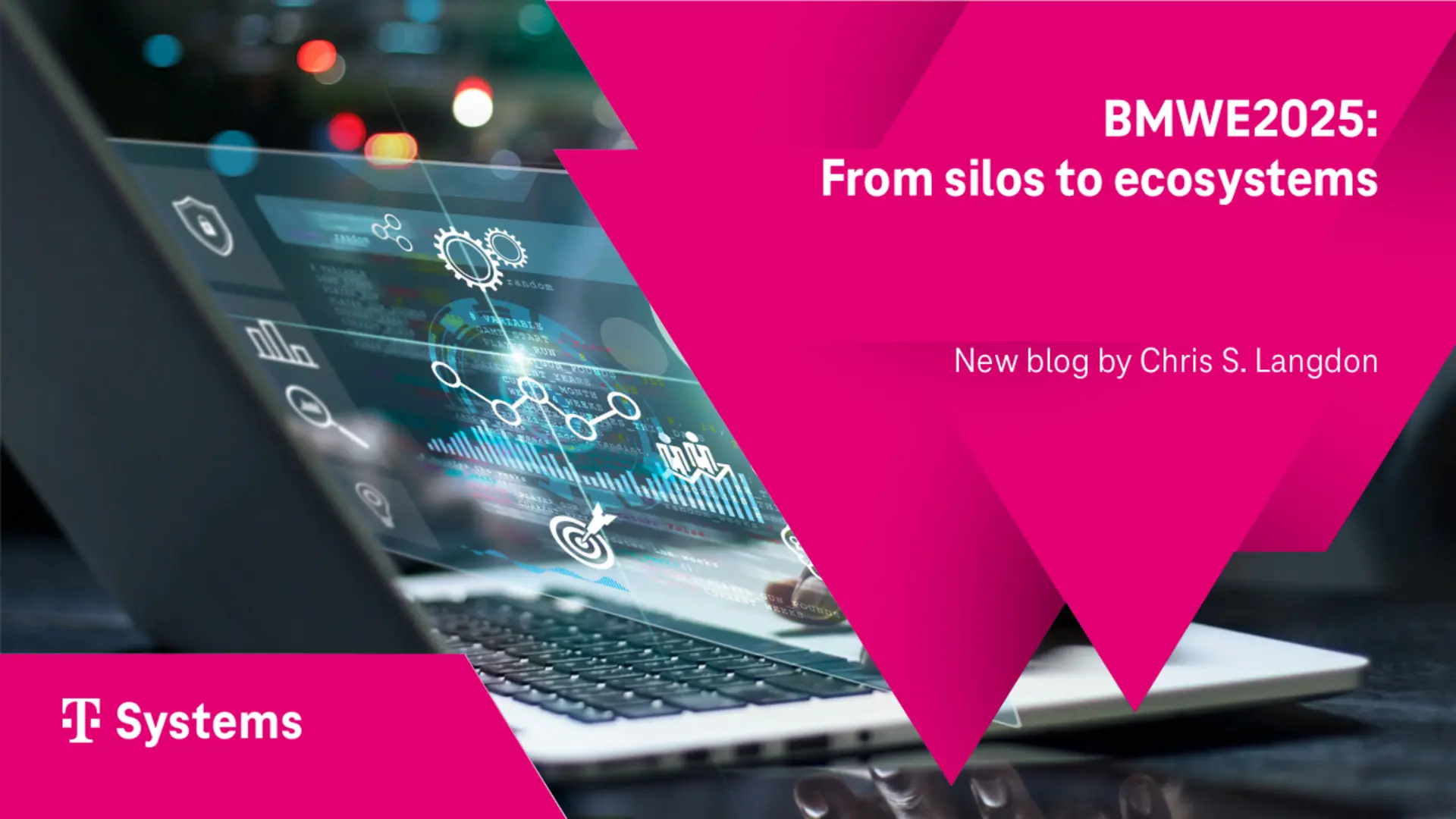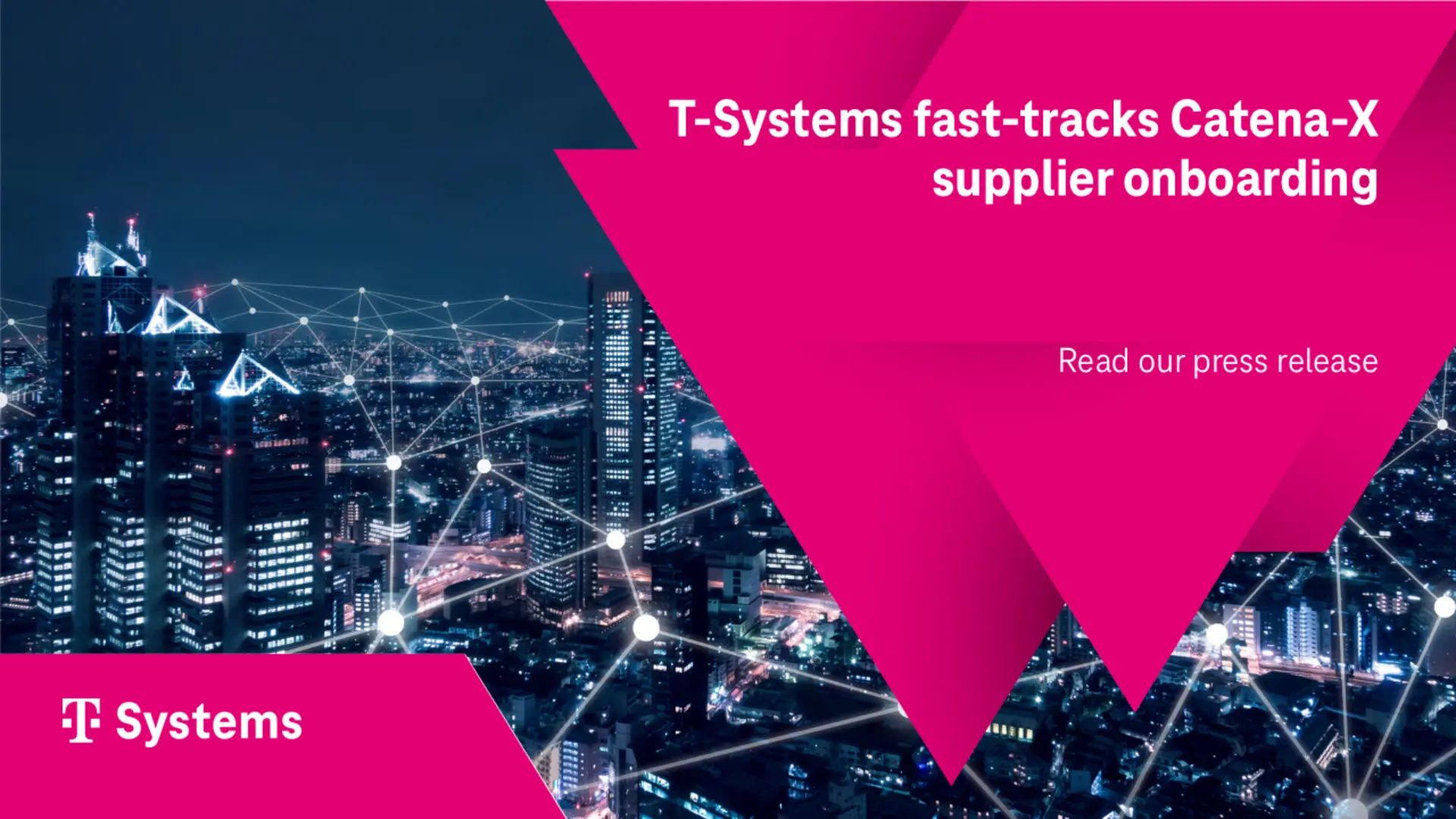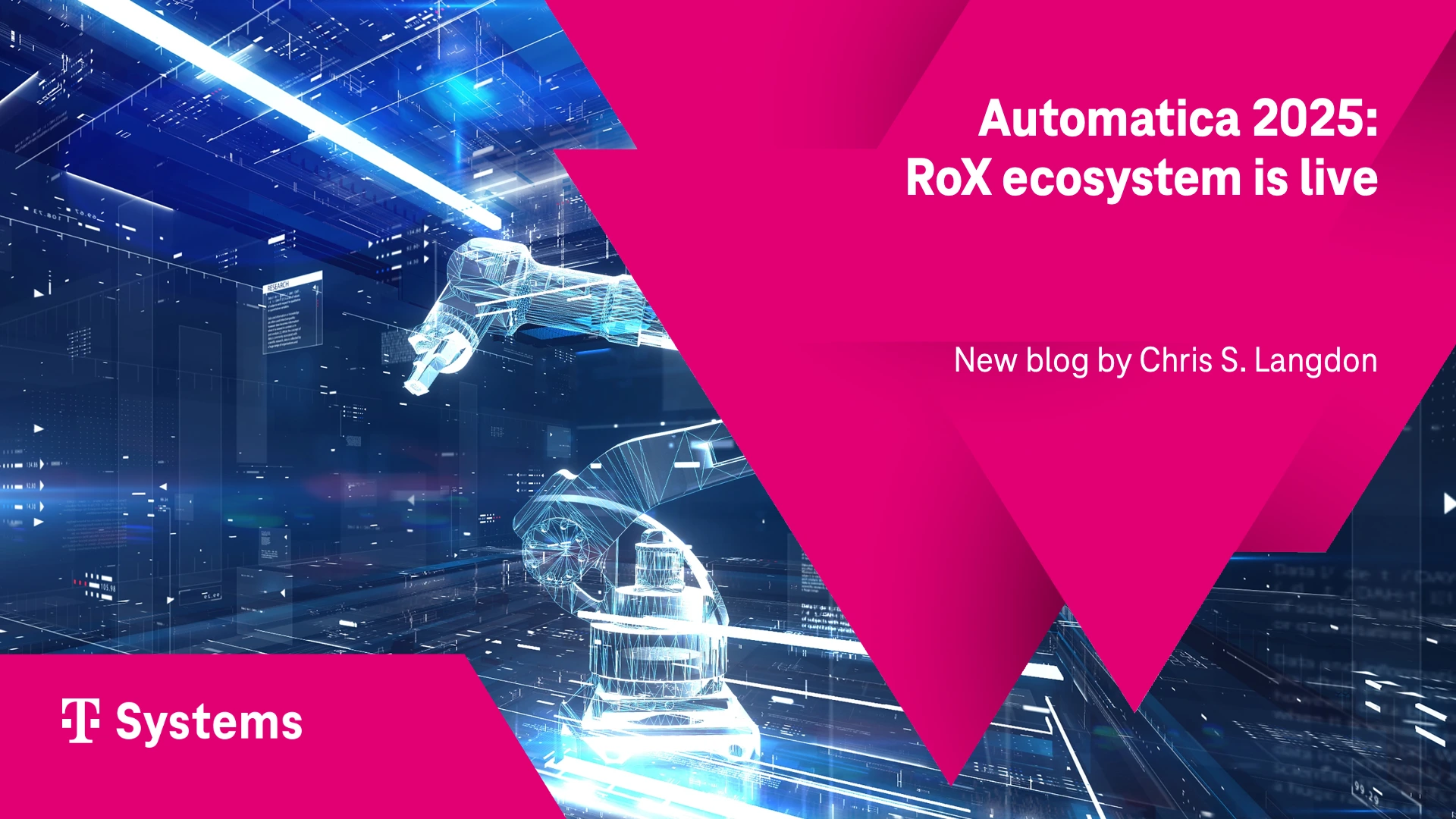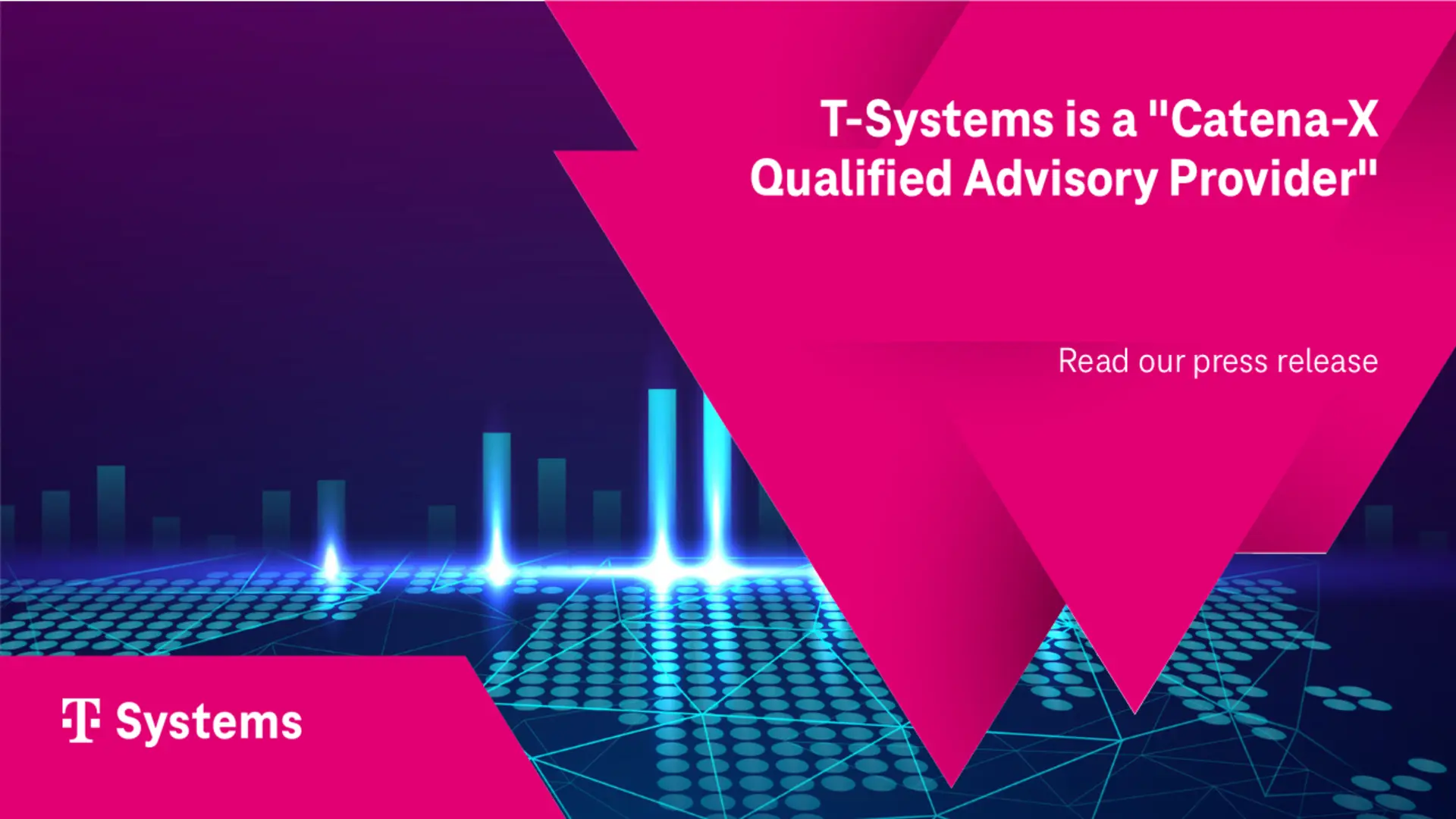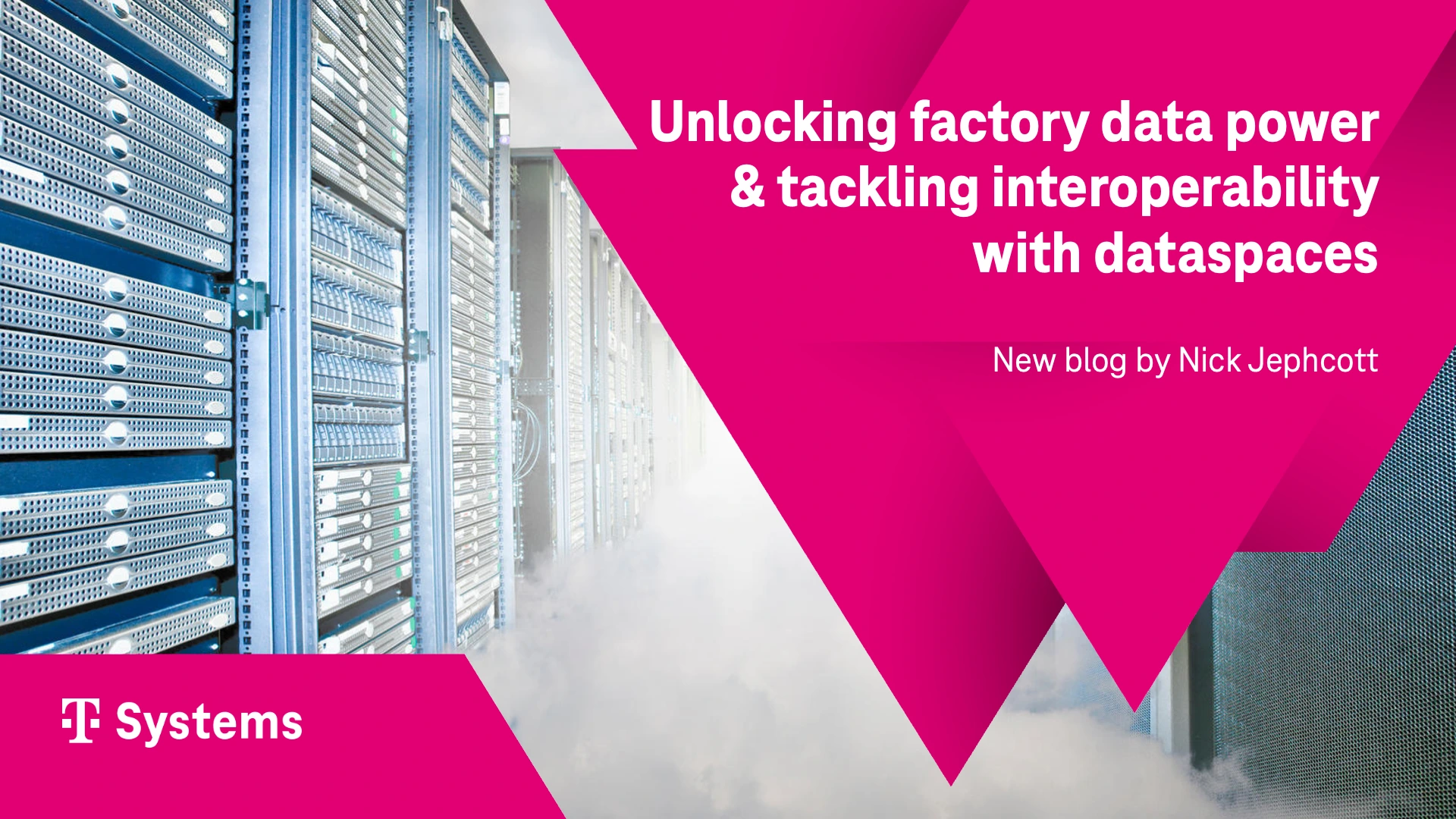This year’s Hannover Fair was a record-setter for our dataspace portfolio, featuring 5 exhibits and 11 talks with live demos (see Figure 1 for overview map). Each activity represents a tangible investment in our Dataspace-as-a-Service and “dataphone” products, consolidated under three strategic directions: into the core, and up and down the data ecosystem software stack. Why so much activity? First, we pursue these scaling investments together with our many partners and clients, reflecting our role as a leading dataspace technology pioneer. Second, when it comes to intangibles like data value and dataspaces, seeing is believing. We’ll begin with a brief refresher on 3 ways companies can participate to benefit in data ecosystems, followed by our 3 strategic directions and proof points that show how our ongoing investments ensure our products scale across use cases, industries, and regions.
Figure 1: Telekom Data Intelligence Hub’s 5 exhibits and 11 talks at Hannover Fair 2025
Dataspaces: 3 ways to participate to secure better data cheaper
How much is really in your product … CO2, China, chips? To answer that, you need trusted digital twins and supply chain insights … not in weeks, but in days. But how can you know what’s inside your product if you don’t even know all your vendors, let alone convince them to share sensitive data? This is where dataspace technology comes in. Department heads—from Purchasing and Sustainability to Quality—will finally get trusted answers to tough questions, on time. Your CIO and CDO will appreciate the data transaction layer, with built-in governance and IP protection, that seamlessly overlays your existing internal data silos—no need to rip and replace. Even better, the same technology enables secure data transactions with external partners across your entire supply chain, with all data flows governed by standardized use policies and fully auditable. And your CFO will love it for its reusability across use cases and scalability across business units and regions.
Figure 2: 3-layer model of a data ecosystem’s software stack (IDSA 2025)
Figure 2 reveals the 3-layers of a data ecosystem and how it seamlessly integrates into your existing IT landscapes by operating atop cloud or on-premises hardware and communication networks to support the automation of your business use case (for a concise CEO-level 2-page overview of the ecosystem stack, refer to Data 0: Readme). The dark-blue dataspace network layer is open-source, decentralized, and therefore, inherently resilient … like the Internet. And just like the Internet, which started as a U.S. government-funded initiative, the core of dataspace technology is being incubated by European government funding, from the same institutions that gave us some of the world’s strictest consumer data privacy protections. So how can you participate to benefit? Three 3 options:
- Join an existing data ecosystem built on dataspace technology. In automotive, Catena-X (CX) has emerged as leading data ecosystem, with Cofinity-X (CY) as its first CX operating company. For example, our client Flex uses our “dataphone” product to connect with CX, enabling primary Scope 3 data exchange with its OEM client Ford for Product Carbon Footprint (PCF) tracking (see Flex testimonial) … a collaboration that earned Flex Ford’s “2025 Sustainability Supplier of the Year Award” (Flex press release 2025-06-03)
- Set up your own internal dataspace. Is there a better or more cost-effective way to “get your data ready for GenAI” (see Davenport & Tiwari 2024)? Leading innovators like IAV, an automotive engineering specialist, have done just that … using our Dataspace-as-a-Service product to deploy an internal dataspace with data governance layered on top of existing heterogeneous repositories and silos. It allows them to aggregate their most valuable training data for proprietary AI, and was presented in a world premiere at CES 2025 in Las Vegas (see IAV’s CEO at CES 2025)
- Form your own community data ecosystem, even with competitors. “If you can’t beat them, join them” has always made business sense. Now, with faster competition from Asia (“China speed”) and a proliferation of technology options … from Large Language Models (LLMs) to AI agents … entire industry clusters are turning to data ecosystems (what is an ecosystem: Data 1 – Ecosystems 2.0). Leading robotics firms in Germany are doing just that, using our Dataspace-as-a-Service to power the RoX ecosystem and accelerate AI adoption (see 2024 RoX at Dürr and RoX at Hannover Fair 2025)
Figure 3: Highlights from Hannover Messe. Upper left: T-Systems-NTT-Fujitsu presentation on a federated trust anchor for Japan (speaker: Chris Schlueter Langdon; foreground: Xin Xu, Director Denso, and Tatsuya Yamashita, SVP Toho Titanium; background: Ulrich Ahle, CEO Gaia-X). Upper right: Industrie 4.0 recognition of the federated ID and trust anchor prototype (with Florian Mohr, Fujitsu; Markus Hess, BMWE; Chris Schlueter Langdon, Telekom). Lower left: TSI’s sovereign cloud with Google (Mr. Marc Hess, Google; Chris Schlueter Langdon, Telekom). Lower right: RoX panel (from left: Dr. Lukas Sohlbach, VDMA; Thomas Hahn, Siemens; Ernst Stoeckl-Pukall, BMWE; Prof. Dr. Frank Koester, DLR; moderator: Prof. Dr. Chris Schlueter Langdon, Telekom)
Our products: (1) Dataspace layer and (2) “dataphones” – Trusted, proven
Needless to say, the Telekom Data Intelligence Hub (DIH) offers the products to get you started fast, delivered as SaaS, without the usual integration or maintenance headaches. And it’s not just us saying this, our customers are. With hundreds of users and thousands of transactions processed daily, our solutions are already in real-world, business-critical use, day in and day out. How did we get it right? We are insiders, we were among the original creators, co-developing and writing the core source code within the Catena-X consortium and contributing it to Tractus-X as open source under the Eclipse Foundation. Our team was even recognized with a “5-Star” performance rating by industry peers (link). Today, we offer:
- Dataspace-as-a-Service for entire dataspace networks through our Build & Operate product family (the dark blue layer in Figure 2), supporting both internal dataspaces (e.g., for IAV) and as the foundational layer for large-scale community or industry-cluster data ecosystems such as RoX or manufacturing firms in Austria’s AMIDS ecosystem
- "Dataphones" from our Connect & Integrate product family, enabling seamless connection to dataspace networks or entire data ecosystems … including Catena-X (operated by Cofinity-X), Mobility Data Space, the RoX ecosystem and more
Hannover Messe: Future-proofing dataspaces – (1) Core, (2) down, (3) up
We continue to lead by ensuring our products remain future-ready and designed for what’s next. True to Drucker’s philosophy of customer-centricity, we work in close partnership with our customers, continually evolving use cases, data models, and next-generation communication protocols. As a trusted, neutral, and secure network provider, Deutsche Telekom focuses on the dataspace network layer. Unlike industry-specific players, Telekom and its T-Systems (TSI) unit leverage a shared core technology based on open-source Tractus-X, certified by Catena-X and IDSA, and compliant with Gaia-X standards to ensure interoperability across industries and international markets. Recognizing that talk is cheap and anything can look impressive on a PowerPoint slide, we chose Hannover Messe, the world’s largest industrial stage, to demonstrate this approach in action. Every exhibit and demonstration at HM fits into one of 3 categories, underscoring our commitment to future-readiness by advancing in all three strategic directions. The 3 red arrows in Figure 2 illustrate our investments in the ecosystem software stack, (1) into the core, (2) down, and (3) up:
(1) Core: Dataspace network layer; Strengthening the core dataspace infrastructure, including trust anchors and interoperability standards across jurisdictions.
- TSI-NTT–Fujitsu partnership: Expanded cross-jurisdictional coverage through a federated trust anchor setup, enabling secure collaboration with firms in Japan and across Asia. Figure 3, upper left, shows our joint presentation hosted on the booth of Gaia-X by its CEO Ulrich Ahle. In addition, IDSA has published this initiative in its Position Paper “Establishing a Unified, Sovereign, and Open Digital Infrastructure: A Vision for Telecommunication Providers”
- VDMA Umati collaboration: Extended support beyond Catena-X data layers to include OPC UA … opening the door to adoption in mechanical engineering and other Industrie 4.0 with an emphasis on enabling small and medium sized firms (VDMA press release 2025-03-25) (Hold 2025)
(2) Down: Communication & Cloud infrastructure; Extending downward into the foundational infrastructure by integrating with communication protocols and hybrid cloud environments.
- VDMA partnership: Enhanced support for essential communication protocols such as MQTT, enabling more effective interfacing with industrial devices, which continues our longstanding collaboration to facilitate better machine-to-machine interaction (Schlueter Langdon & Schweichhart 2022)
- Google: Clients value our advanced cloud-agnostic capabilities of our Dataspace-as-a-Service and dataphone products (“run anywhere”), now strengthened with enhanced data sovereignty protections to address the rising need for sovereign cloud storage and compute with world-class tooling at affordable rates. This was showcased together with Google Cloud Platform (GCP) in our joint Industrie 4.0 session. Figure 3 (lower left) features Marc Voss, Google’s Country Leader Customer Engineering, and Chris Schlueter Langdon, Telekom
(3) Up: Data products & Super-apps; Expanding upward into data products and super-apps to unlock new value-added services and ecosystem-scale applications.
- RoX consortium: Enabled the launch of RoX as a data ecosystem using our Dataspace-as-a-Service product for rapid application development and modernization, showcased both at the RoX booth and during a panel on the Industrie 4.0 stage. Figure 3 (lower right) features key RoX stakeholders from the Mechanical Engineering Industry Association (VDMA), the Chairman of the International Manufacturing-X (IMX) Council with Thomas Hahn of Siemens, the Federal Ministry of Economic Affairs and Energy (BMWK), the German Aerospace Center (DLR), and moderator Chris Schlueter Langdon, lead of the Digital Robotics Ecosystem in RoX (Telekom)
- Denso: Ported EcoPass, a Digital Product Pass (DPP) enterprise application, into the Catena-X ecosystem and app store, supported by our advisory services and dataphone capabilities (Denso press release 2025-03-24; Catena-X news 2025-04-22)
These investments on display at HM2025 uniquely position us to lead and evolve our products with a clear focus on customer needs and value, delivering a common core that supports universal use and scales across use cases, industries, and regions. As a result, your CIO and CDO benefit from interoperable, end-to-end managed dataspace solutions that operate on top of existing heterogeneous data repositories and silos, all while ensuring data sovereignty and centralized data governance. And your CFO will appreciate the reduction of costly duplicate investments across business units and geographies.
Next Steps: How to get started
- Explore our product offerings: Discover how “Dataspace-as-a-Service” (our Build & Operate product family, short video) and “dataphones” (our Connect & Integrate) can support your business needs
- Learn from real-world success stories: Gain insights from … client testimonials by Flex and Witte … Digital Product Pass innovation … and a Sustainability with Catena-X case study
- Get involved: Join one of our ongoing pilots or co-create through customer-centric prototyping. We’re here to help — contact us
References
Davenport, T., and P. Tiwari. 2024. Is Your Company’s Data Ready for Generative AI? Harvard Busienss Review (March), link
Hold, A. 2025. Data spaces: First implementation for Small and Medium-sized Enterprises. Media information (2025-03-25), Deutsche Telekom, Bonn, link
Guggenberger, T. M., C. Schlueter Langdon, and B. Otto. 2025. “Data Spaces as Meta-Organisations. European Journal of Information Systems, January: 1–21, link
Mertens C. 2025. Establishing a Unified, Sovereign, and Open Digital Infrastructure: A Vision for Telecommunication Providers. Position Paper (March), International Data Spaces Association (IDSA), Dortmund, link
Schlueter Langdon, C., and K. Schweichhart. 2022. Dataspaces: First Applications in Mobility and Industry. In: Otto, B. et al. (eds.). Dataspaces – Part IV Solutions & Applications. Springer Nature, Switzerland: 493-511, link


